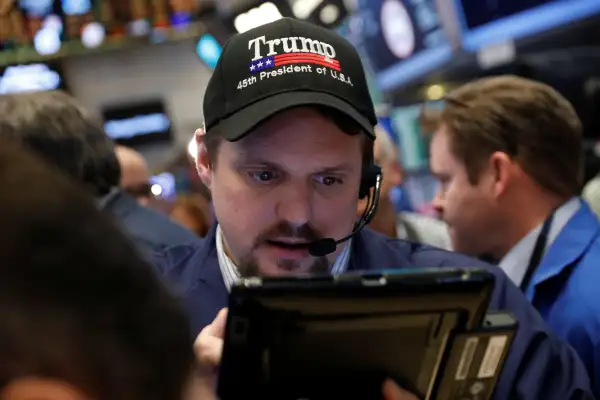What Really Happened to Stocks in the Year After Trump's Election
Money is not a client of any investment adviser featured on this page. The information provided on this page is for educational purposes only and is not intended as investment advice. Money does not offer advisory services.

President Trump boasted this week that the stock market is setting record highs under his watch.
“There is great confidence in the moves that my Administration is making," he tweeted, adding that tax cuts for companies and individuals will add fuel to the fire.
By almost every measure, Wall Street has been sizzling in the 12 months since Donald Trump's election victory on Nov. 8, 2016. What's more, “The 12 months since election day have been among the least volatile ever for the equity markets," said Ryan Detrick, senior market strategist for LPL Financial.
But how does the Trump rally really stack up?
1. If you look at the broad market, it's been very good by historic standards.
In the first full year since President Trump's election, the Standard & Poor's 500 index of U.S. stocks has returned 21.1%, which is roughly double the historic annual average for equities.
There have been 17 presidential elections since 1950, with Republicans winning 10 of those races. Among first-year rallies, this one ranks 5th among all presidents and 2nd among GOP commanders-in-chief.
Among Republican administrations, the Trump rally trails only the 21.7% gain in the first year after George H. W. Bush was elected in 1988.
The top 3 gains were posted under Democratic presidents: the 31.7% stock market surge in the first year after Bill Clinton's re-election victory in 1996; the 28.4% return a year after John F. Kennedy was elected in 1960; and the 23.9% rise in the S&P 500 following Barack Obama's second-term win in 2012.
2. If you look just the biggest stocks, the Trump rally has been spectacular.
As well as the broad market has performed over the past 12 months, shares of the biggest and most dominant companies in the economy have fared even better.
Over the past year, the Dow Jones industrial average is up 28.5%, making this the best rally among big stocks since 1944 and the 4th best since 1924.
The Dow's performance under Trump trails only the 52.1% gain for the Dow in the first year after Calvin Coolidge's win in 1924; the 47.9% gain following Franklin D. Roosevelt's election victory in 1932; and the 29.8% run-up following FDR's victory in 1944.
3. If you look at the market globally, the Trump rally has actually been tepid.
While the S&P 500's gain was terrific by historic standards, it was only middling compared with the performance of global equities over the past 12 months.
In fact, the S&P's 2l% gain pales in comparison to the 56% gain for Austrian stocks; the 40% gain for Italian shares; the 29.8% climb for French equities; the 29.7% gain for German stocks; and the 28.4% rise in Swedish shares.
U.S. stock performance looks even worse when pitted against emerging market stocks, or shares of companies based in fast-growing but less-developed economies. For example, over the past year Polish shares are up 52.7%; Chinese stocks are up 43.5%; South Korean equities are up 41%; Hungarian shares are up 32.1%; and Peruvian equities are up 29.9%.
